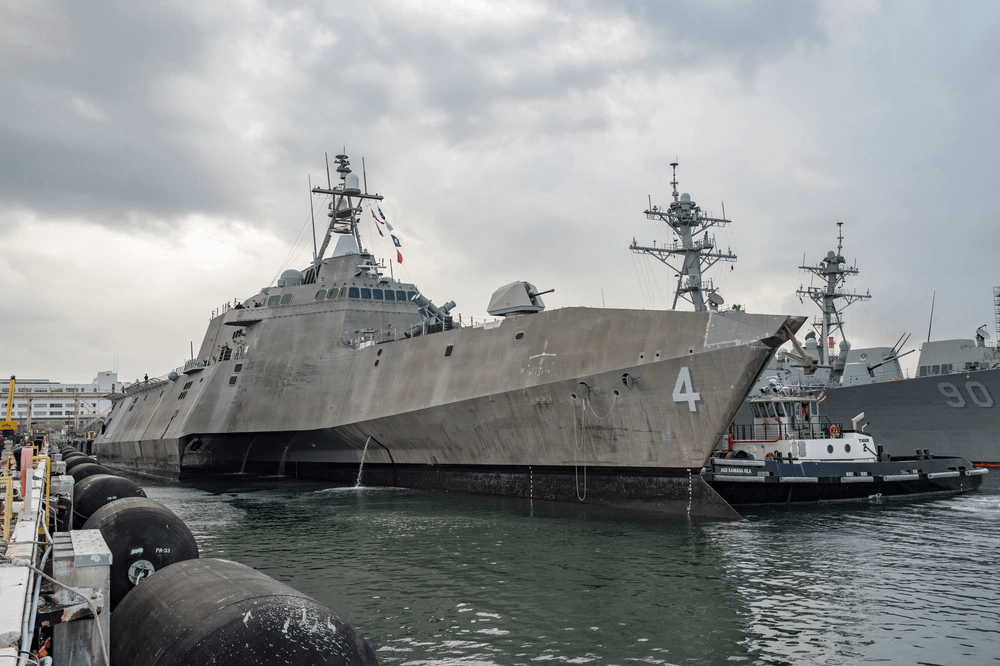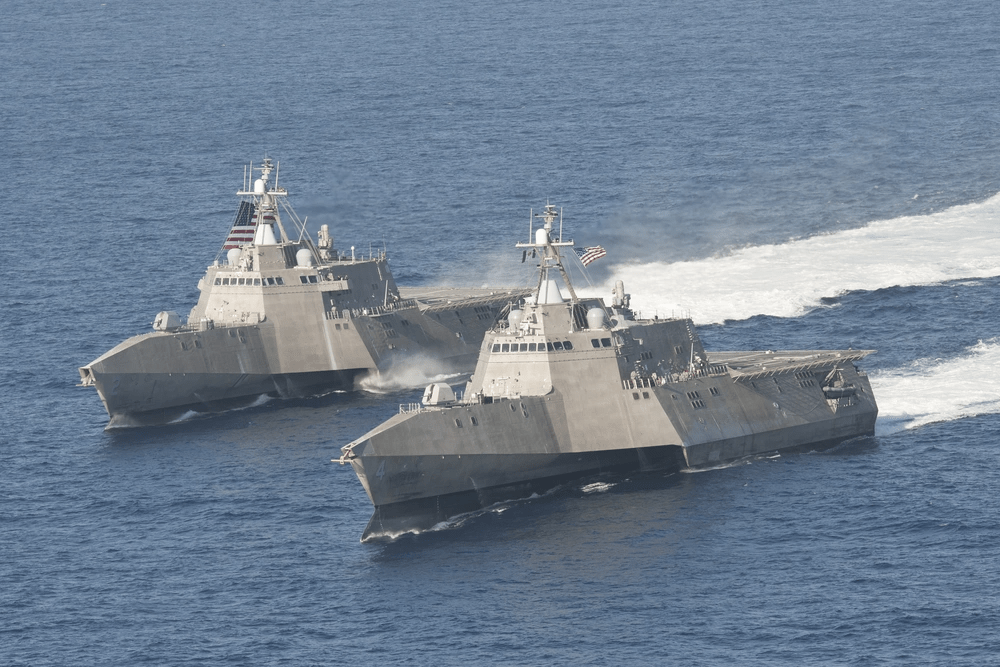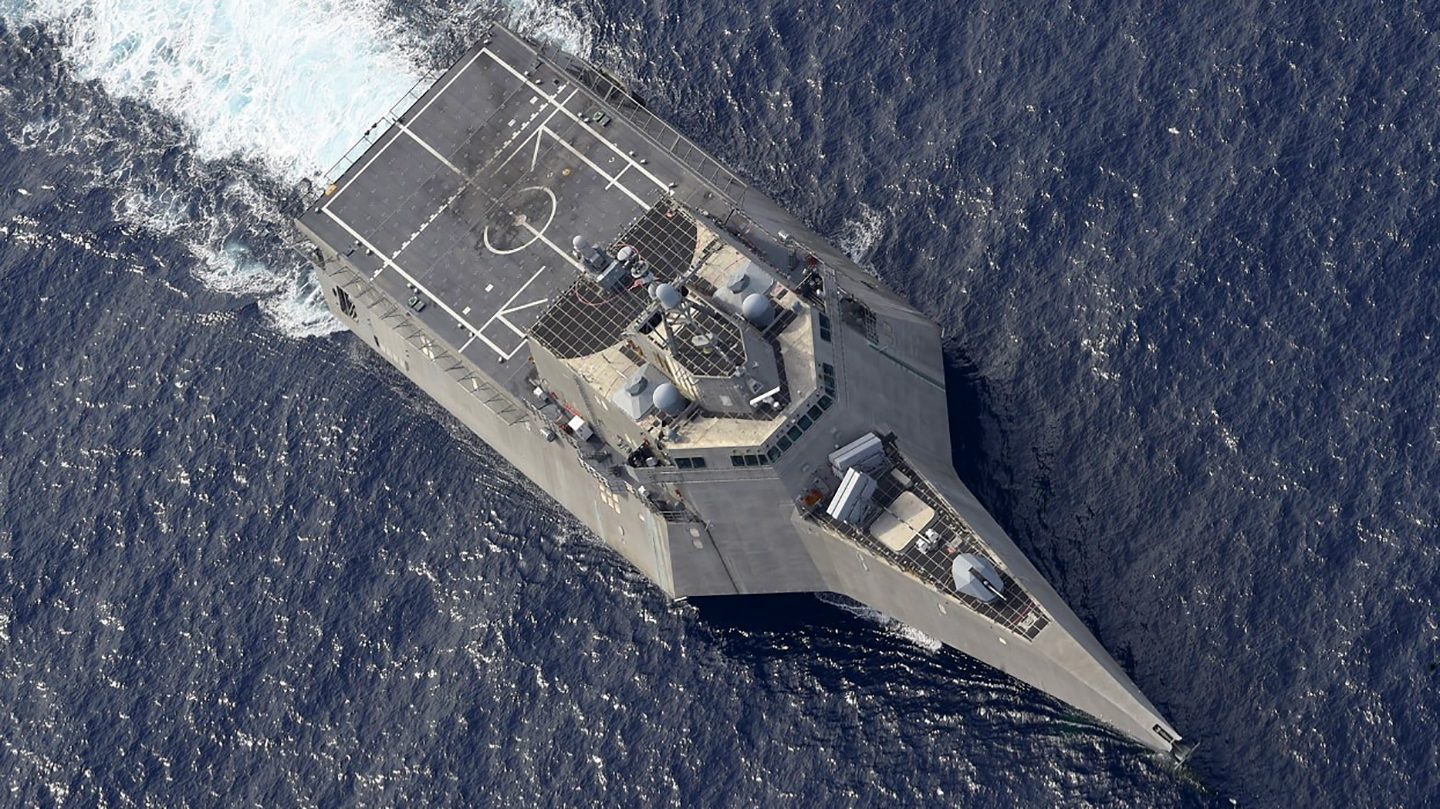The U.S. Navy is restricting the operational capacity of the Independence class USS Omaha (LCS-12) Littoral Combat Ship, or LCS, following the detection of structural damage. At least six ships have been impacted by this issue, which has been determined to be a design defect, although it is unclear if the others are facing similar restrictions.
In a recent report published by Military Times’ Senior Reporter, Geoff Ziezulewicz, it was announced that the U.S. Navy’s fleet of LCSs is facing the latest in a long line of issues affecting their performance. In previously undisclosed documentation obtained by Ziezulewicz from the Navy, it was discovered that nearly half of the 13 ships Independence class ships currently in service have developed cracks in their hulls over the past few years.

The cracks in question are caused by a design flaw in “higher-stress areas of the [ship’s] structure.” Although the Navy maintains that the flaw “does not pose a risk to the safety of Sailors onboard the ships,” the shipbuilder, Austal USA, has introduced a “revised configuration” on all Independence class LCSs currently ‘under warranty.’
Alan Baribeau, Naval Sea Systems Command spokesman, stated that “analysis of the bow structure with the combined vertical and lateral loads did not identify any hot spots below the waterline, and this specific detail does not occur below the waterline.” The Independence class ships affected will require replacement of their “deck plate and shell plate with thicker material, among other actions,” either by Austal or the Navy. The added weight of a thicker material could present its own set of problems, potentially slowing the fleet down even further despite the multitude of design tradeoffs originally intended to ensure high speed.
Baribeau also highlighted the frequency by which cracks would appear within the hulls of Independence class LCSs. These were first noticed in “higher-stress” areas of the USS Coronado in 2019, with at least an additional five LCSs of this type suffering similar impairment.

The impact of the cracks was so great that the Navy issued a temporary standing order on Omaha. The ship is no longer allowed to travel at speeds above 15 knots, or 17 mph. For a ship that is designed for high-speed, including sprint speeds of over 50 mph, that is a massive restriction. Omaha is currently the only ship confirmed to be operating under these restrictions, but when asked if the others had similar restrictions, the Navy would not confirm or deny it, simply stating:
“All Independence variant ships have been inspected and are able to meet their operational requirements.”
The order also states that Omaha cannot operate in “sea state 4,” meaning in waters with a maximum wave height of 8.2 feet. Omaha’s temporary order suggested the cracking may have been caused by “under-designed structural defects” at ship frames 36 and 45, although this remains unconfirmed by the Navy.
The Navy’s LCS fleets, which include examples of two distinct designs, the Independence class and the Freedom class, have been plagued by multiple design problems since their conception. Issues have been cutting across both classes, with Freedom‘s recent obstacle being its faulty combining gear. The vessels themselves were designed to fulfill the Navy’s need for fast and small surface combatants tailored to operate in littoral regions in the 1990s, while projecting power through their extreme deployability.

Conceived with the ability to fulfill a multitude of roles, including neutralizing small boats, quiet diesel-electric submarines, and locating mine threats, LCSs were meant to be true multi-role platforms. The ability to rapidly switch out mission packages to change the central role of each ship was at the core of the LCS.
As of late, LCSs have had trouble deploying in significant numbers at all, and the mission package concept has been totally abandoned. Each ship now set to get a single mission package installed permanently, most of which are still not available. One module, the anti-submarine warfare type, has been eliminated from the program entirely.

Unlike the Freedom class of LCS, which features a steel Double Chine Advanced Semi-Planing Monohull, the Independence class ships have an aluminum hull and trimaran design. The choice of aluminum was clearly meant to increase the Independence-class’ maneuverability and speed, and it’s also related to the type’s genesis as a high-speed ferry design. But this could potentially make it more vulnerable to damage, as well as structural fatigue and corrosion. This has long been a hotly debated facet of the Independence class program.
As The War Zone published back in 2016, the USS Montgomery (LCS-8) experienced fracturing in its aluminum exterior twice in a span of one month during that year. The first incident occurred October 4, 2016, after the ship collided with a tug boat while evading Hurricane Matthew, and the second took place October 29, 2016, after coming into contact with a concrete wall while passing through the Panama Canal.

While instances of hull fracturing have previously been associated with Independence class LCSs, the structural nature of this design flaw is surprising. The Navy is already planning on decommissioning all of the Freedom class variants currently operational despite having only been in service for a very short period of time. Aside from the first two examples, which were used as training ships and in an older configuration than the rest of the fleet, the Independence class has so far been seen in a bit better light, but this chronic cracking issue, even for very young hulls, will surely weigh it down, as well.
The bottom line is that the Independence class LCSs have not delivered on their intended promises no matter how you spin it. They have yet to be deployed in some major areas where their capabilities could be best utilized, such as the Middle East, as The War Zone previously noted. The Freedom class USS Sioux City only just recently became the first LCS of either type to deploy to European waters and is reportedly set to head to the Middle East after conducting operations there.
If this design issue on the Independence class ends up forcing more extended maintenance intervals and operational restrictions that negate the ship’s very reason for being, it could prompt a situation broadly similar to the one facing the Freedom class now.
With an actual frigate waiting in the wings in the form of the Constellation class, and competing priorities for manpower and funds — these ships which were supposed to be cheap to operate cost nearly as much to do so as an Arleigh Burke class destroyer — it wouldn’t be all that surprising if a portion of the Independence class fleet gets decapitated like the Freedom class in future Navy budgets.
Contact the author: Emma@thewarzone.com
